
The Bobbery Hunt on the Bombay esplainad
Mumbai’s Kala Ghoda locality

An astonishing sight greets the tourist visiting Mumbai (formerly Bombay). Amongst all the grand Victorian buildings in the centre of town is a huge edifice visibly in the process of collapse. Large posters warn of its instability and yet incredibly it is still inhabited, not just by lawyers’ offices but also by families. One ventures inside at one’s peril to be greeted by an incredible scene of decrepitude and an array of electrical wiring of nightmarish danger.

A watercolour of the John Watson Building as planned. Click here to see a photograph of the watercolor with its frame and extensive caption, which reads as follows: "this building was designed in London for the late John Watson Esq. of Gelt Hall, Castlecarrock, by Messrs. Ordish & Le Febre C.C. (who also made the plans for the roof of St. Pancras station, London.) The material[s] for this building were wholly English, the iron frame from Derby, the bricks & cement from the banks of the Thames, the tiles from Stafffordshire and finally the red stone plynth and column bases from Penryth, Cumberland, and was [sic] conveyed from England to India by sailing ships vis [the] Cape of Good Hope in the year 1864-5 and erected on the Esplanade in the town of Bombay under the superintendence of the late Mr. Thomas Thompson of Wetheral. The design and mode of construction proved quite a success. Its dimensions are 190 feet long, 80 feet wide, 175 feet high. J.P.W.” Note however that the mansard roof shown here was never added. [This image is here reproduced with the permission of the Castle Carrock (Cumbria) webmaster.]


Left: Detail showing the iron frame of the hotel. Right: The arcade shows clearly the iron construction. [Click on images to enlarge them.]
In 1867 a traveller on a morning walk observed “something like a huge birdcage had risen like an exhalation from the earth”. He was witnessing the construction of the same building known variously as Esplanade Hotel and more usually just as Watsons’s.
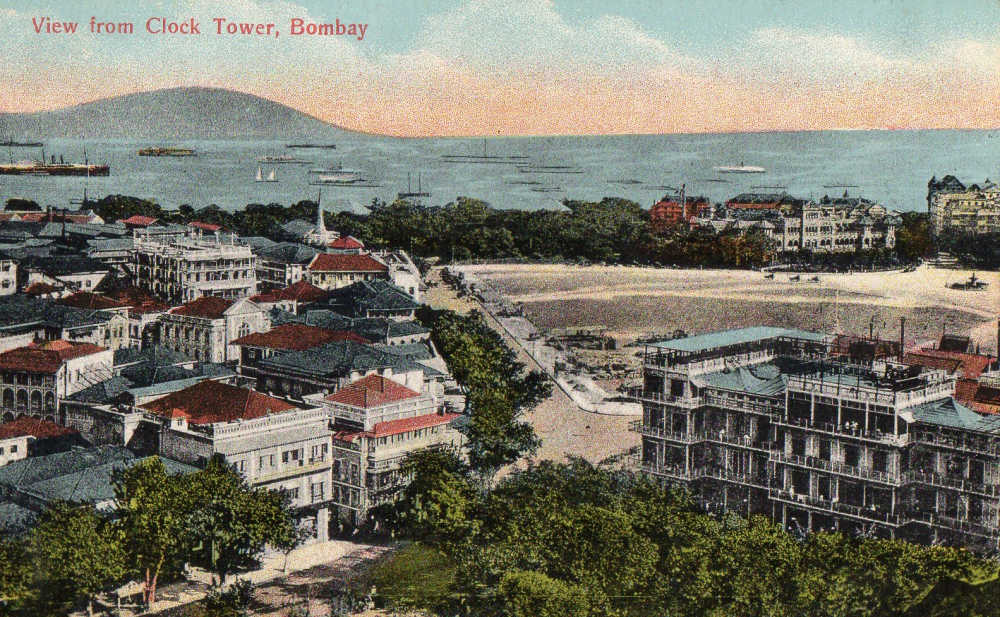

Left: Watson's Hotel in the right foreground. Right: Watson's logo survives on a balcony. [Click on images to enlarge them.]
In “Bombay, the Cities within” the authors Sharada Dwivedi and Rahul Mehotra explain that “an enterprising Englishman John Watson gave the city its first large and well run hotel... At the government auction held in 1864 Watson successfully bid on a plot on the Esplanade... All the building materials for the handsome five storied cast iron frame structure were imported from England. The red stone plinth and the bases of the columns came directly from the town of Penrith in Cumberland, the county from which Watson hailed... A distinctive spatial feature of the building was an internal atrium around which were housed functions such as dining and shop”. Another was the arcade at street level.
A researcher in Watson’s native Cumbria provides more detail. “The hotel was built between 1867 and 1869. Its final design was by the civil engineer Rowland Mason Ordish, who was also connected to the design of the roof of St Pancras Station in London... as well as the Crystal Palace in London. Ordish was based in Derby and worked alongside the Phoenix Foundry.
Watson’s “boasted a sumptuous, top lit ground floor restaurant with attached billiard room, a first floor dining saloon (with another attached billiards room), and three upper storeys given over to 131 bedrooms and apartments, the uppermost of which were reserved for “bachelors and quasi single gentlemen”. With over 120 baths fitted, it outdid European levels of luxury. It was thoroughly ventilated throughout with a punkah wallah [a man-operating a fan] serving every room and it commanded breathtaking views across the harbours, bays and distant hills – and it boasted India’s first steam powered lift.”

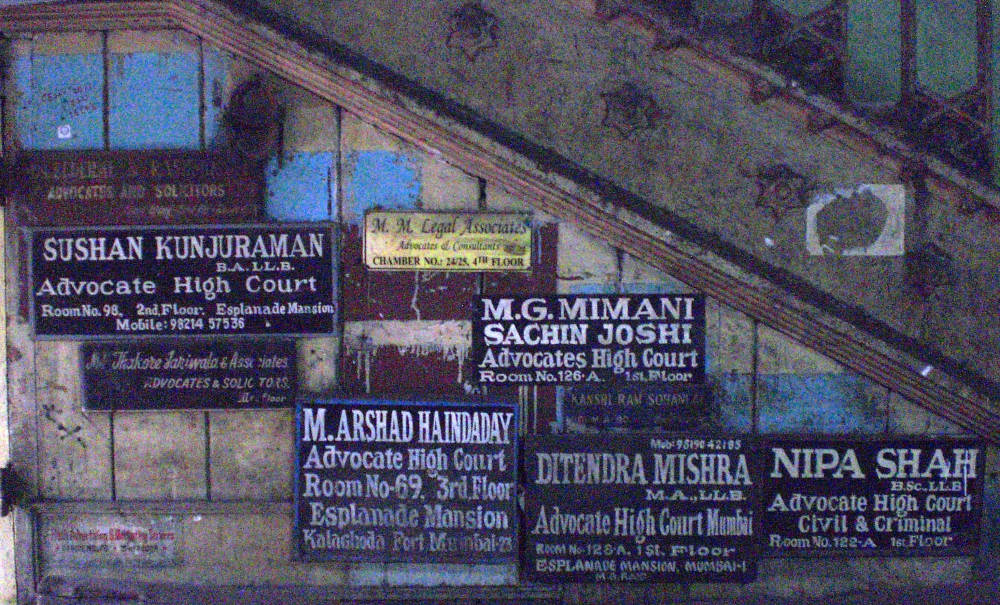
Left: Esplanade Mansions warning notice.. Right: Lawyers offices in Esplanande Mansions. [Click on images to enlarge them.]
Watson’s decline began in the first decade of the 20th Century. The Taj Hotel trumped Watson’s both for luxury and location. When the King and Queen visited Bombay in 1911 the Times of India complained that "Their majesties will have to pass what we can only suppose is an experiment in garishness, Watson's Hotel, and that building is a good illustration of the dangers to which a sensitive public is exposed." In 1960 the hotel closed and the building became Esplanade Mansions. In 2005 it was nominated by World Monuments Fund as a building of architectural and cultural importance. The Fund’s website reports that “after the hotel closed in the 1960s, a private owner subdivided the building into residences and commercial spaces. More recently, tenancy laws have made it difficult for the owner to collect rents sufficient to maintain the building. After years of neglect, inappropriate additions, and minimum repairs, the cast iron structure is now failing; a portion of the building collapsed shortly after Watch listing”.
is flanked by several iconic buildings, but even among such stately facades as the National Gallery of Modern Art, Jehangir Art Gallery and Bombay High Court, Esplanade Mansion holds its own.
Bobbery Pack - A hunting pack made up of local dogs including hounds, terriers, lurchers, and sheepdogs.
It's confusing enough finding a hunt to attend and figuring out what to wear, let alone knowing what the traditional terms mean that are being shouted around you. Luckily, our handy guide highlights some common hunting terms and their meanings.
Autumn Hunting - The early part of the season, from around August to the beginning of the Main season.
Babbler or Babbling - A hound who speaks when it is not hunting.
“Beware hole” - A call for riders to be careful of potholes, rabbit holes, etc. whilst riding – often pronounced as “war ‘ole” (‘ware hole).
Biddable - Hounds are said to be ‘biddable’ when they are at their most responsive, e.g. after a check.
Bitch - A female hound. A “hot bitch” indicates a female hound that is in season.
Blank - The hunt draws a blank when they fail to find a scent from the area they were searching, so the covert can be said to be “blank”.
Bobbery Pack - A hunting pack made up of local dogs including hounds, terriers, lurchers, and sheepdogs.
Brock - A colloquial term for a badger.
Brush - A colloquial term for the tail of a fox.
Bye-day - An additional day of hunting not on the meet card.
Cap - The daily charge or donation from riders who do not usually subscribe to the hunt.
“Car please” - Shouted to tell followers to let a car through.
Casting - Hounds are cast to look for the line of the scent.
Charlie - Along with other names such as “Reynard” and “Tod”, the name that was often used instead of “fox”. It is thought to originate from the MP Charles James Fox.
Check - When hounds lose the scent temporarily.
Country - The land that a hunt is allowed to hunt on.
Couple - Hounds are counted in couples so, for example, 7 couple would be 14 hounds.
Covert - A wood or other area where a scent may be picked up.
Cry - see ‘speak’ (below).
Cur dog - A canine which is not a hound.
Dog - A male hound.
Drag - The artificial scent laid in drag hunting.
Draw - Putting hounds into an area and moving them through to try and find a scent.
Entered - An entered hound is one who has completed one or more hunting seasons.
Falconry - The keeping, training and / or sport of hunting with falcons or other birds of prey.
Feather or Feathering - When a hound is on the line but is uncertain, it will not speak and instead will wave or ‘feather’ its tail (stern) and move along the assumed line.
Field - The mounted followers.
Field Master - The Master in charge of leading the Field.
Foil - Smells or disturbed ground that spoil the line of scent.
“Gate please” - Called down the line to alert the last person to close a gate behind them.
Gather - When the Huntsman blows certain notes on the hunting horn to gather the hounds together or to signal the end of hunting for the day – to “blow the gather”.
“Good morning” - Used at the beginning of the day as a greeting, regardless of the time.
“Good night” - Used to say goodbye whenever going home, even if it’s 1pm!
Heel - Hounds are said to be hunting the heel line if they’re going the wrong way on the scent (the opposite direction).
“Hold hard” - Called by the Field Master to stop the Field immediately.
“Holloa” - Pronounced ‘holler’, it is a loud, high-pitched sound made to indicate the sighting of the quarry. It may be emphasised by the raising of a hat or arm, or replaced by a whistle.
Horn - Used by the huntsman to control and communicate with the hounds - e.g. to encourage them or call them back - or to signify the end of the day.
Hounds - All scent-hunting dogs are referred to as hounds.
“Hounds please” - To tell hunt followers to move out of the way.
Hunt Staff - Responsible for working the hounds (e.g. Huntsman, Whipper-in, etc.).
Huntsman - The rider who hunts/follows and controls the hounds.
“Kick on” - If a rider stops or makes way for a Master at a gate or jump and the Master says you may go on ahead.
Laid on - When hounds are introduced to a line.
Lawn Meet - Hosts provide refreshments at this sociable type of meet.
Line - The scent laid during trail-hunting.
“Loose horse” - Shouted if someone has fallen off and the horse is running away.
Made Worker - Refers to a hound or terrier that is so experienced it can be relied upon to do its job without further training.
Master - Person responsible for the running of the hunt and talking to landowners, planning the route, etc.
Meet - Where the hunt will meet before going out for the day.
Meet card - List of dates and times for each hunt meet.
Mixed pack - A pack consisting of male and female hounds.
Mute - A hound that hunts without speaking.
Opening meet - Start of formal hunting or the start of the “Main Season”.
Own - Hounds are said to ‘own the line’ when they pick up a scent.
Point to point - A day of racing over fences, organised by the hunt.
Puppy - A hound who is new to hunting that season - when weaned, young hounds will be sent off to hunt supporters to be raised, socialised and familiarised with livestock and other dogs so that they are well-behaved when hunting begins.
Ratcatcher - A tweed jacket, the official dress for mounted followers during Autumn Hunting and for visitors to a hunt.
Rate - When hounds are reprimanded when they stray from the pack or riot, etc. This can be accompanied by a whip cracking.
Riot - Hounds riot when they chase something they shouldn’t, e.g. a deer or a hare.
Season - The time period in which hunting takes place.
Speak - Hounds are said to speak, not bark, when following a scent.
Stern - A hound’s tail.
“Tally ho” - A term used by the Huntsman to encourage hounds on to a scent – “tally ho back” or “tally ho over” may be called by experienced members of a hunt to indicate the direction of the quarry.
Throw up – when hounds lose the line and check, they lift their heads and look around.
Trencher fed - Term used for hounds not looked after as a pack, but who live with individuals and are brought together for hunting days.
Whipper-in - Hunt staff who help control the hounds.
Now you know the basics, how do you get out there on the hunt?

Bobbery Hunt

Bobbery Hunt, November 1809
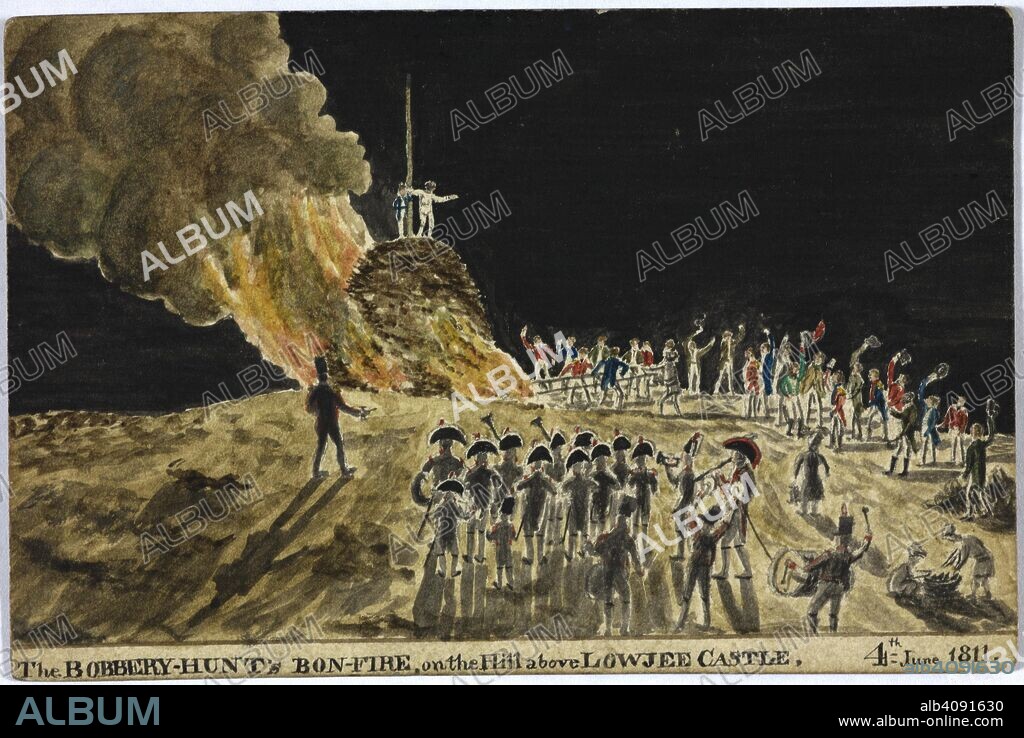
Bobbery Pack - A hunting pack made up of local dogs including hounds, terriers, lurchers, and sheepdogs.
===============================
Mumbai’s Kala Ghoda locality is flanked by several iconic buildings, but even among such stately facades as the National Gallery of Modern Art, Jehangir Art Gallery and Bombay High Court, Esplanade Mansion holds its own.
The Bobbery Hunt on the Bombay esplainade
When Watson’s Hotel (Esplanade Mansion’s original name) opened in 1867; its 130 plush rooms and 20 suites were meant to cater exclusively to elite English guests — not Indians. In fact, the story goes that Jamshetji Tata came up with the idea for Mumbai’s Taj Mahal Hotel after he was denied entry in Watson’s.
After ten years of restoration, visionary Jamsetji Tata’s one-time residence, Esplanade House, stands like a splendid reminder of its legacy. Marvel at frames from an exclusive photo walk with its conservation architect Vikas Dilawari
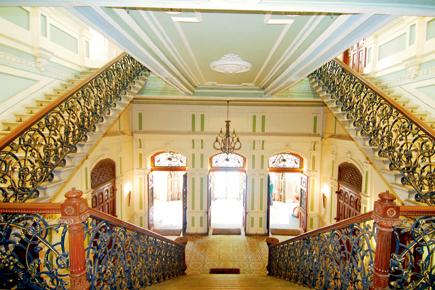
Esplanade House
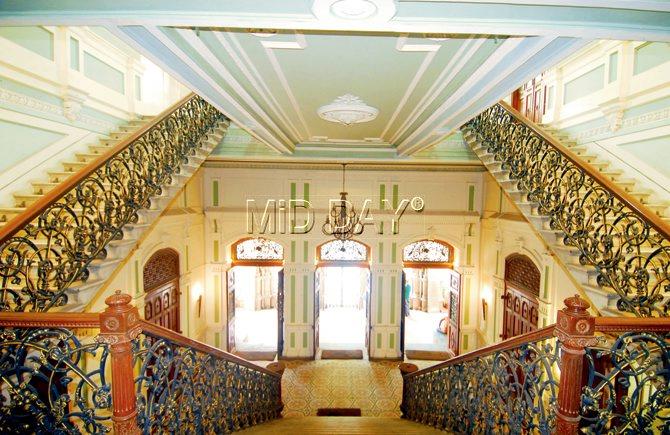
The cast iron and wood railing staircase is the centrepiece that connects the ground and first floors of the Esplanade House. Pics/Sameer Markande
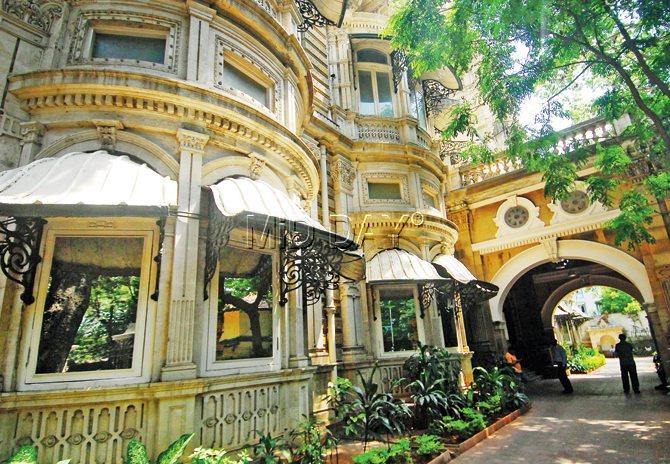
Bay windows and curvilinear lead sheet chajjas make for an impressive blend of Indian and Western influences at the Esplanade House. It consists of two buildings, the main block facing the Esplanade ‘maidan’ and the annex on the rear side. The construction began in 1885, and was completed in 1887. It was based on designs by Jamsetji Tata and Mr Morris (of Gostling and Morris, a local firm).
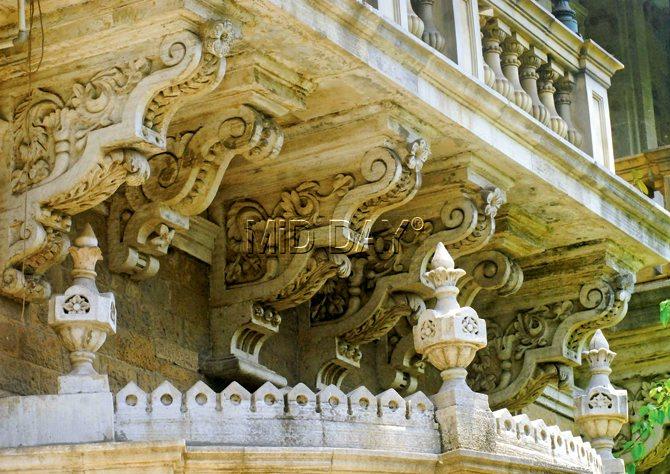
Intricate stone carvings
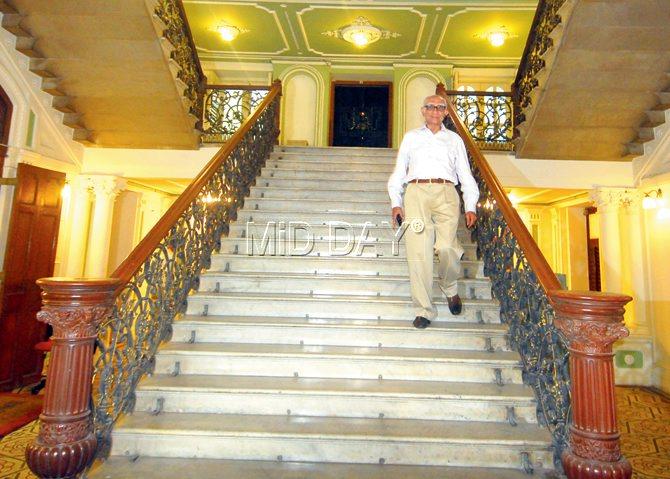
The cast iron railing and teakwood grand staircase is the centrepiece of this residence. Seen in the frame is Fali P Sarkari, trustee, RD Sethna Scholarship Fund. The finest cast iron work can be seen at its main gate, staircase, indoor tympanums and the inter-connecting bridges.


